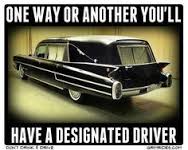WHY DO YOU SMOKE?
There are many reasons why
people smoke. I will list some:
·
COMFORT: Most
people feel a sense of comfort from the smoking of a cigarette.
·
TENSION: Do you feel the need to smoke after an
argument, or when you are having a tough day? Maybe you feel that smoking
relieves the tension when you are upset or depressed?
·
WEIGHT
CONTROL: Many people will use the
smoking of a cigarette so they do not eat desert.
So, instead of snacking, you
smoke.
·
STIMULATION: Does smoking help you to concentrate? Does it boost your energy?
·
FITTING IN
TO A GROUP: So, you want to be like
everyone else? Hmmm……..
TRUTH
Chemicals found in the tobacco and during the cigarette processing
enter the blood stream through the lungs, or the buccal membranes of the mouth,
and attach to the pleasure sensors in the brain to produce a sense of euphoria
and well-being. Your body thinks it is pleasurable, while the actual result is
damage to the rest of the body. Your body develops a need, or addiction, for
the pleasurable feeling, which explains why you crave them when you do not have
them.
REASONS TO
QUIT SMOKING
·
Early
Death: Smoking does affect your
lifespan.
·
Heart
Attack and/or a Stroke is far more likely to occur in a smoker.
·
Lung
Cancer – there is a good reason to quit.
·
You Can Be
in Control of Your Own Habits, and not be a slave to a cigarette.
·
Your body ages quicker, your skin looks older,
faster if you smoke.
·
Smoking
is more addictive than many illegal drugs on the market.
·
Second
hand smoke can cause: asthma
attacks, ear infections, coughing, sneezing, bronchitis, pneumonia, and sudden
infant death syndrome (SIDS). There are
more, but, these are the most common.
As you can see, it makes a difference
to your lungs when you smoke, whether you feel it or not. Is this really what you want to do to your
own body?
STAYING HEALTHY IS A GOOD REASON TO QUIT SMOKING. Over time, you will be able to breathe easier,
maybe walk without coughing, and your lungs may not burn at night when you lay
down to sleep. You may even be able to play sports or outside games without
getting winded. Adding a daily
exercise regimen will improve the results you see.
EOS cannot make the claim
that you will fully recover the health you had previous to starting smoking,
because that really depends on how often you smoked, how many years, how deeply
you inhaled, and how much damage has already been done to your body. But the
sooner you quit, the lesser the damage done, and the more likelihood your body
can compensate and completely recover its previous health.
AND DO YOU LIKE HAVING EXTRA MONEY??????
 The price of one pack of
cigarettes can buy a gallon of milk and a loaf of bread. It can put gasoline in
your car, so you can go to work. There
are so many items you can buy with $6.00.
The price of one pack of
cigarettes can buy a gallon of milk and a loaf of bread. It can put gasoline in
your car, so you can go to work. There
are so many items you can buy with $6.00.
I did an interview with our
Administrative Assistant, Joe Lobert, on his past experience with smoking
cigarettes. Joe describes it like this,
“As a former cigarette smoker, I know that it gives pleasure to smoke. The nicotine triggers the pleasure centers of
the brain, making it very difficult to break the habit.” Then Joe went on to explain why he finally
quit, “I almost died from bronchitis and I was a single parent. I did not want to leave my child behind
without a parent to take care of him. I know for a fact that the smoking of
cigarettes is what caused my bronchitis. I have not had bronchitis since I
quit.”
The owner of EOS, Kat Parmer,
quit in 1993 because she had suffered pneumonia 9 times in less than three
years. Her doctor warned her that smoking was going to kill her, if she did not
quit. She states, “I am much healthier now at 61 than I was when I was 38, the
only way I can explain it, is because I quit smoking.”
Needless to say, this is a
non-smoking facility. All the staff at Employee On-Boarding Specialties would
like to see more healthy people as we continue to work in the occupational
health world. Life is precious, and we
all should not only value our own life, but those around us.
Sources: WebMD and the Center of Disease Control and
Prevention.
Sources: Interviews with Employee On-Boarding
Specialties, LLC























